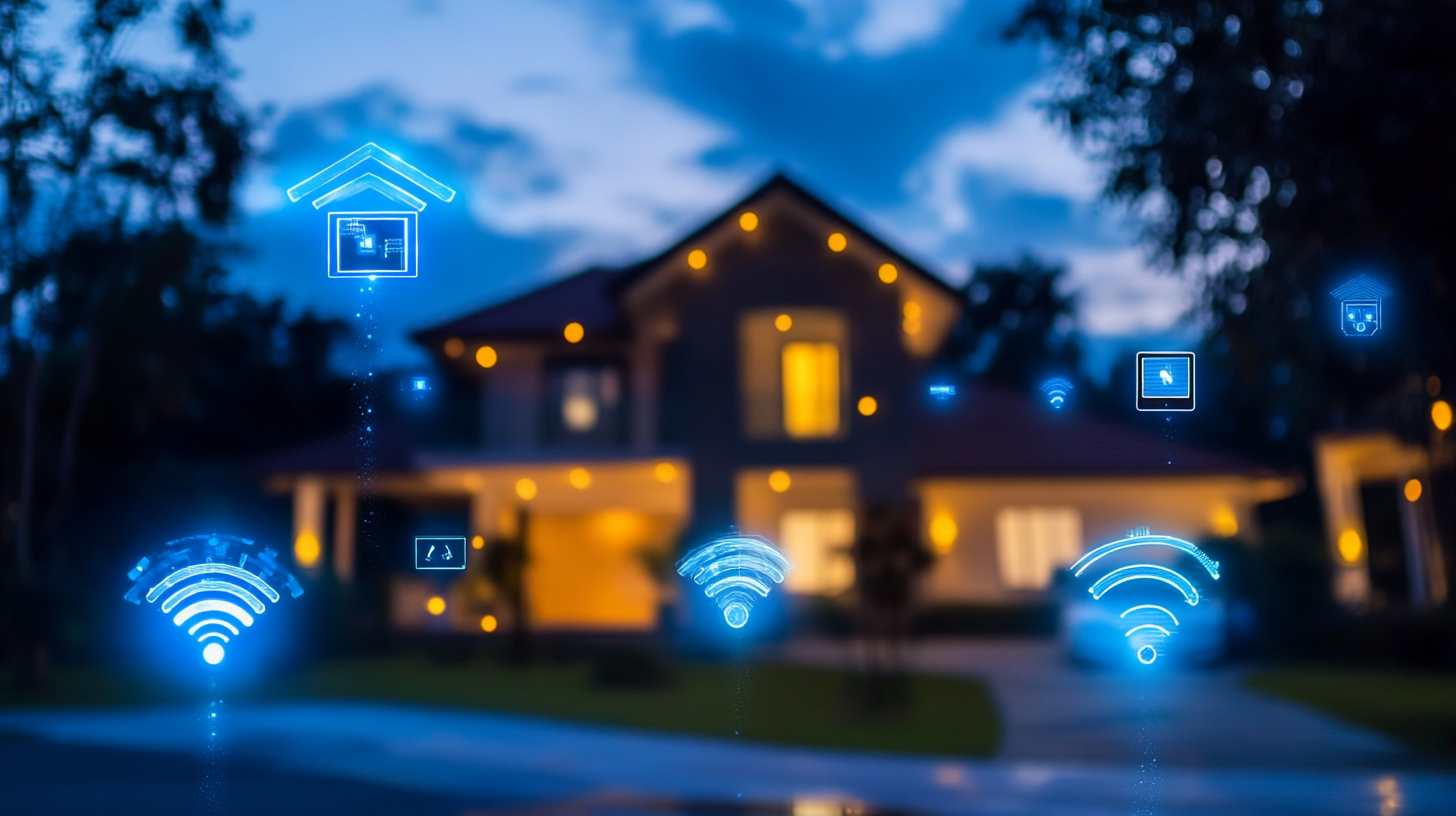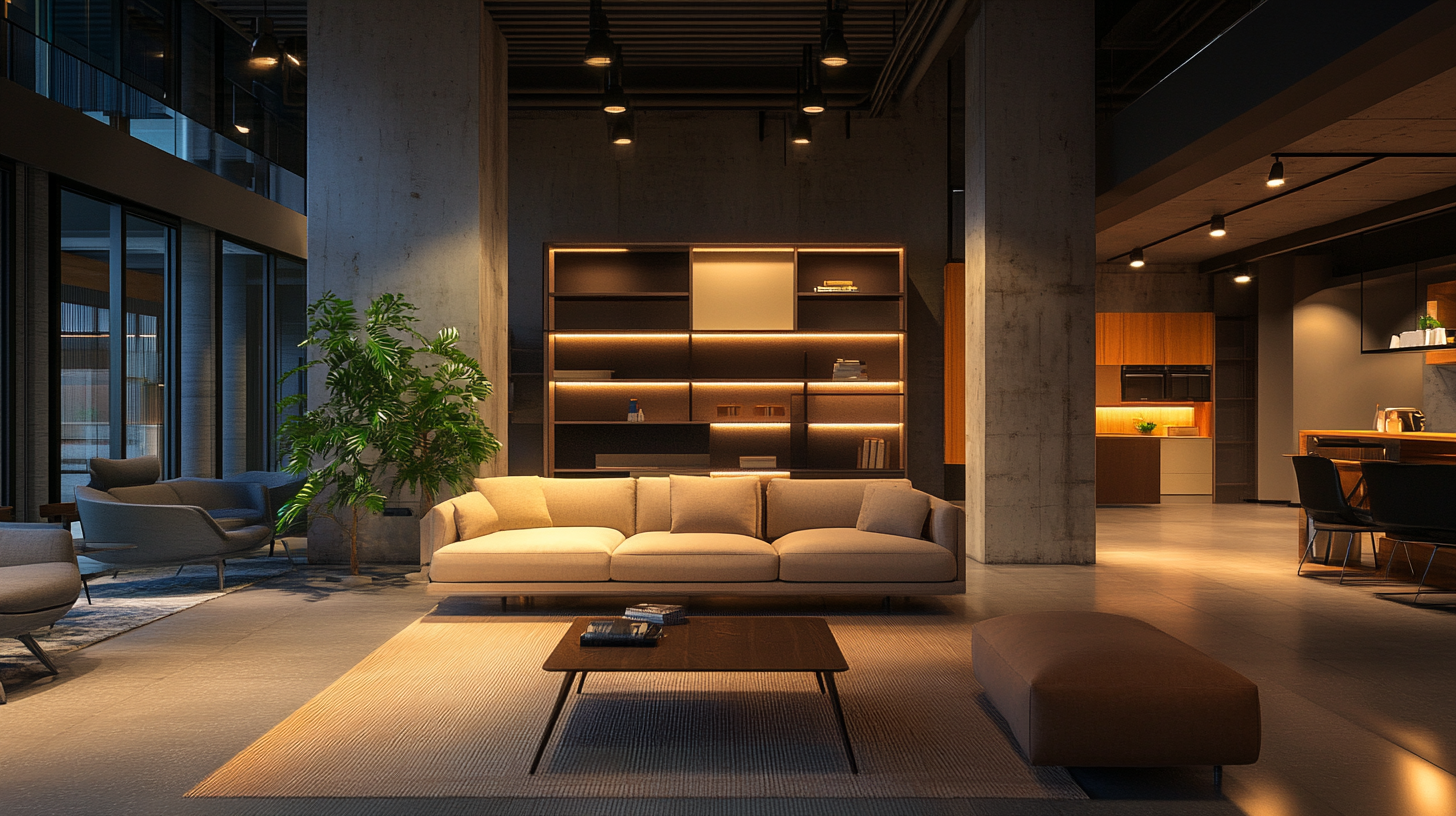Exploring the Advantages and Applications of Smart Lighting Systems in Modern Enterprises
In this ever-changing world of technology, Smart Lighting Systems have newly converged into modern transformation for the common enterprise. Innovations in these state-of-the-art systems not only improve the ambiance of spaces but provide several benefits that would help make workplaces more efficient while reducing operational costs. While striving to create environments conducive to creativity, collaboration, and productivity, Smart Lighting Systems serve as a novel means to achieving such an undertaking alongside sustainability.
The applications of Smart Lighting Systems also extend beyond pure illumination. Remote control, adaptive brightness, and energy monitoring can make them specifically applicable to any business area. Whether a large corporate office or a retail space, the implementation of Smart Lighting improves the design and at the same time satisfies the increasing requirements for energy efficiency. The benefits and various applications of Smart Lighting Systems shall be unravelled in this article and how it thus transforms businesses in the modern world.

Key Benefits of Smart Lighting Systems for Modern Workspaces
Smart lighting systems are rapidly changing the world's marching canopies and bringing in lots of benefits that go beyond illumination alone. The American Society of Interior Designers has reported that well-designed lighting improves productivity by as much as 20%.This is another key observation when we especially look at office environments; an employee's mood and efficiency can be affected by good lighting. With smart lighting systems, employers are able to set light levels according to the specific action being performed and thus create optimal moments for focus and creativity. On the other hand, energy efficiency is another significant argument in favor of installing smart lighting systems. The U.S. Department of Energy states that, with smart lighting, energy consumption would be lowered by about 30% to 50%, when compared to conventional lighting solutions. Sensor control is an ever-evolving technology whereby light output is altered according to occupancy and availability of natural light, thus maintaining lower operational costs while minimizing the carbon footprint for the enterprise. Quite contrary to contributing to its sustainability goal, such efficiency only translates to acutely responsive clients and stakeholders focusing on environmental integrity. Above and beyond mere energy savings, smart lighting setups prioritize safety and flexibility in the workplace. The International Facility Managers Association states that effective lighting reduces accidents in the workplace and improves employee satisfaction. Flexible lighting types are then able to accommodate the diverse needs that these spaces have, always flowing from the collaborative spaces to the more sober quiet zones, creating fulfilled and productive employees. As companies' designs evolve, investing in smart lighting systems is becoming a major driver in the strategy for adaptable and efficient workspace.

Integration of Smart Lighting with IoT and Building Management Systems
Smart lighting systems integrated with IoT and building management systems represent a radical transition in the new enterprises' approaches to optimizing their operational efficiencies such buildings enable real-time monitoring and control of their lighting systems, thus improving overall building management, allowing for less energy consumption and improved occupant comfort. Bringing such technologies together would allow for adaptive lighting scenarios to be defined depending on occupancy and natural light availability and would contribute significantly to energy savings and to a lower carbon footprint.
The world building management system market, which is estimated to reach $19.8 billion by 2024, is also driving intelligent solutions demand, especially in emerging economies that are largely urbanizing themselves. Smart lighting is an example of IoT-powered applications revolutionizing safety and security through advanced analytics and automation. In addition to bringing about efficiency in energy consumption using artificial intelligence and IoT, enterprises also promote sustainability through advances in technology.
Under the banner of smart buildings, the role of lighting is again going to be more significant since the focus is becoming so much energy efficiency and sustainability. This integration would not be an improvement but a necessity in future proofing facility management. As the cities evolve toward smarter ecosystems, the interconnectivity of these systems will dictate the responsive and responsible construction of urban infrastructure. The trend behind data-driven operation ensures that smart lights would continue to advance capabilities congruent to broader objectives of resource optimization and sustainability in the built environment.

Energy Efficiency and Cost Savings Achieved Through Smart Lighting
The smart lighting system is positioning itself to be the linchpin of modern companies, especially with energy-saving and cost-cutting measures. In a report from the U.S. Department of Energy, it was highlighted that lighting, in general, can account for nearly 25% of energy usage in any commercial building. Emergency lighting goes hand in hand with all of the above. Smart lighting directly means LED technologies with control, and by applying this, energy expenditure from the buildings can be dramatically curtailed. The report states that with any form of LED lighting, one can save about 75% of energy, which relieves operational costs and underpins the concern for sustainability.
Besides energy savings, smart lighting systems usually undergo major cost-reducing chances. A paper published by the International Energy Agency (IEA) tells us savings from such control applications could increase savings by 20% up to 30%. Such systems help to control lighting applications, real-time monitoring through occupancy or availability of daylight. Because of this intelligent response, the work environment can be made pretty comfortable, if not luxurious, while allowing the maximum applicability of costs associated with energy usage.
Smart lighting may also enhance productivity. According to a survey performed by the Lighting Research Center, properly designed lighting systems can improve worker satisfaction and concentration-levels, which translates to performance improvements. With the increased focus on optimizing workplace environments, investment in smart lighting becomes more of a strategic decision rather than an operational one. This infusion of smart lighting can lead to substantial long-term financials for the enterprises.

Enhancing Employee Well-Being and Productivity with Adaptive Lighting
Your data has been trained till October 2023.
Active workplaces today emphasize smart lighting systems as a key feature for increasing general employee well-being and productivity. Adaptive lighting adjusts to the natural circadian rhythms of an individual, rendering the workspace comfortable while promoting equilibrium and health among employees. As businesses also transition into more remote working setups, the traditional dynamics of office life tendently do get disrupted, making adaptive lighting that much more necessary.
Simply put, there is no second opinion on well-being vis-a-vis employees, especially in times when workplace monitoring trends show up. On one hand, surveillance tools are being deployed to the extent that for tracking one's own productivity, and on the other hand, concern about such measures not drawing results is gaining ground. Rather, environments cultivated in partnership with technology, such as smart lighting, can stimulate creativity, elevate moods, and ultimately foster higher performance. Such lighting literally implies the daylight spectrum or even task-specific light that helps counteract the ill effects of computer fatigue and enhances focus.
Adaptive lighting solutions fit the category of supportive initiatives for employees, as opposed to the invasive monitoring that reacts. As the enterprise changes look into the radically transformed modern work environment, developing well-being through intentional design will freshen workplace culture, thus reinforcing both engagement and retention over time. Therefore, it won't be an exaggeration to say that the incorporation of smart lighting systems will turn the table for a healthier, productive workforce.
Innovative Applications of Smart Lighting in Retail and Public Spaces
The advent of smart lighting systems in both commercial and public space applications dramatically alters our perception and interaction with these spaces. Even as the appetite for intelligent and green options soars, businesses are steadily converting their existing systems and other décor to smart lighting - highlighted during the recent exposition focused on commercial property tech in hospitality - the 2025 Shanghai International Hotel and Commercial Space expo.
Smart lighting applications bring immense benefits to retail environments. Adaptive lighting which personalizes light according to consumer behavior and time of a day is favorable for retail sites because it creates an environment that invites customers to linger longer and spend more. For example, that could be executed through dynamic lighting schemes purposely highlighting products while still minimizing energy cost. Such innovations not only save the earth but also create a lively shopping experience, which is fundamental in competing in today's market.
Smart lighting solutions bring exciting developments to public spaces as well. Intelligent street lighting systems are being adopted by cities to improve safety while reducing energy. Brightness may be adjusted according to pedestrian activity and weather conditions; thus they can be regarded as more sustainable methods for urban management. As was witnessed in the Shanghai expo, well-thought-out placement of smart lighting can seriously improve the stationing and aesthetic quality of public areas, thus leading to higher interaction and enjoyment on the part of the community.






